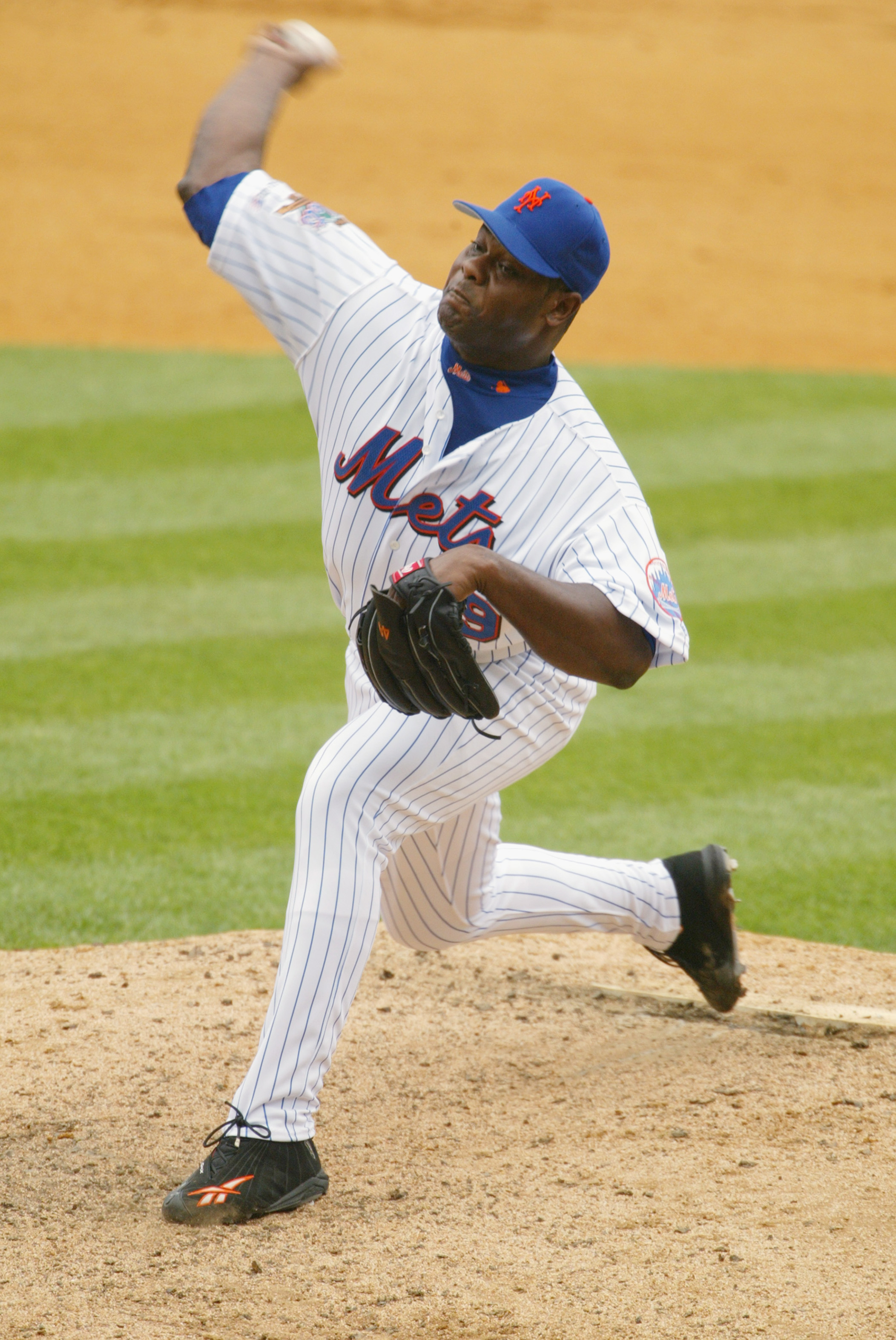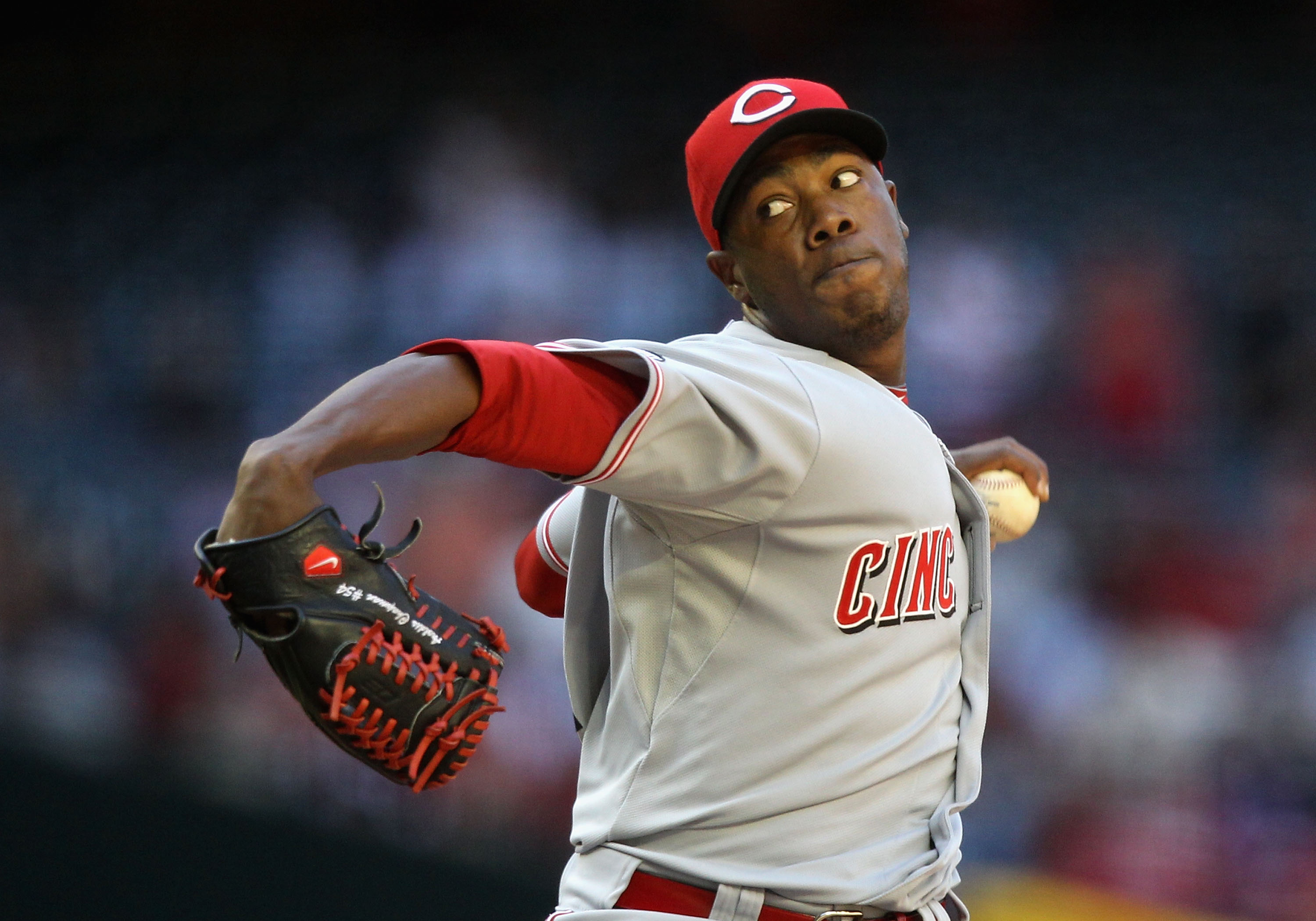What Is The Fastest Pitch Ever Thrown In Baseball? Unveiling The Record-Breaking Feat
Baseball fans have always been fascinated by the sheer power and precision of a pitcher's throw. Among the countless pitches thrown throughout history, one stands out as the fastest ever recorded—a record that captures the imagination of sports enthusiasts worldwide. The fastest pitch ever thrown in baseball not only showcases the physical prowess of the pitcher but also highlights advancements in training, technology, and biomechanics. But what exactly is this record-breaking speed, and who holds the title? In this article, we'll delve into the details of this remarkable achievement, exploring the science, history, and stories behind the fastest pitch ever thrown in baseball.
The quest for speed in baseball is as old as the sport itself. Pitchers have consistently pushed the boundaries of human capability, striving to outdo their predecessors and competitors. The fastest pitch ever thrown in baseball represents a pinnacle of athletic achievement, a moment frozen in time that continues to inspire awe. Whether you're a casual fan or a die-hard enthusiast, understanding the factors that contribute to such a feat can deepen your appreciation for the game. From the mechanics of throwing to the role of equipment and training, we'll uncover the secrets behind this extraordinary record.
As we explore the fastest pitch ever thrown in baseball, we'll also examine the broader context of pitching in the sport. How has the art of pitching evolved over the years? What role does speed play in a pitcher's overall effectiveness? And what can aspiring athletes learn from those who have reached the upper limits of velocity? By answering these questions and more, this article aims to provide a comprehensive look at one of baseball's most thrilling achievements.
Read also:Susan Eileen Thatcher Exploring Her Life Achievements And Legacy
Table of Contents
- Who Holds the Record for the Fastest Pitch Ever Thrown in Baseball?
- What Factors Contribute to Throwing the Fastest Pitch?
- The Science Behind the Fastest Pitch Ever Thrown
- How Has Technology Impacted Pitching Speeds?
- Is There a Limit to How Fast a Pitch Can Be Thrown?
- Training and Preparation for Record-Breaking Pitches
- What Are the Risks of Throwing at Extreme Speeds?
- How Does the Fastest Pitch Compare to Other Sports?
Who Holds the Record for the Fastest Pitch Ever Thrown in Baseball?
The record for the fastest pitch ever thrown in baseball is held by Aroldis Chapman, a Cuban-born pitcher known for his blazing fastball. On September 24, 2010, while playing for the Cincinnati Reds, Chapman achieved a pitch speed of 105.1 mph, setting a Guinness World Record. This incredible feat not only solidified his reputation as one of the hardest throwers in Major League Baseball (MLB) but also cemented his place in sports history.
To better understand Chapman's journey, let's take a look at his personal details and bio data:
| Full Name | Aroldis Chapman |
|---|---|
| Date of Birth | February 28, 1988 |
| Place of Birth | Holguín, Cuba |
| Position | Pitcher |
| MLB Debut | August 31, 2010 |
| Teams Played For | Cincinnati Reds, New York Yankees, Chicago Cubs |
Chapman's record-breaking pitch was recorded during a game against the San Diego Padres at PETCO Park. The radar gun clocked his fastball at 105.1 mph, surpassing the previous record of 104.8 mph set by Joel Zumaya in 2006. Chapman's ability to consistently throw at speeds exceeding 100 mph has earned him the nickname "The Cuban Missile." His unique combination of strength, mechanics, and control makes him a formidable opponent on the mound.
How Did Chapman Achieve Such Incredible Speed?
Several factors contribute to Chapman's ability to throw the fastest pitch ever recorded. First and foremost is his physical build. Standing at 6'4" and weighing approximately 215 pounds, Chapman possesses the ideal physique for generating power. His long limbs and strong core allow him to maximize torque and momentum during his delivery. Additionally, Chapman's pitching mechanics are nearly flawless, enabling him to transfer energy efficiently from his body to the ball.
Another key factor is his rigorous training regimen. Chapman's workouts focus on building explosive strength and improving flexibility, both of which are critical for achieving high velocity. He incorporates exercises like weighted ball drills, resistance training, and plyometrics to enhance his performance. Furthermore, Chapman's mental preparation plays a significant role in his success. His confidence and focus allow him to execute pitches with precision under pressure.
What Factors Contribute to Throwing the Fastest Pitch?
Throwing the fastest pitch in baseball is not just about raw strength. It involves a combination of physical attributes, technical skills, and mental preparation. Let's break down the key factors that contribute to achieving record-breaking speeds.
Read also:Discover The World Of Kirstentoosweet S A Comprehensive Guide
Physical Attributes
Pitchers who throw at extreme velocities often share certain physical characteristics. These include:
- Height and Arm Length: Longer limbs allow pitchers to generate more leverage, increasing the speed of their throws.
- Muscle Mass: A strong, well-conditioned body provides the power needed to propel the ball at high speeds.
- Flexibility: Greater range of motion in the shoulder and elbow joints enables pitchers to maximize their throwing mechanics.
Technical Skills
Beyond physical attributes, mastering the technical aspects of pitching is crucial. These include:
- Grip and Release: The way a pitcher grips and releases the ball can significantly impact its velocity and movement.
- Delivery Mechanics: Efficient mechanics ensure that energy is transferred smoothly from the body to the ball.
- Balance and Stability: Maintaining balance throughout the pitching motion helps pitchers generate consistent power.
Mental Preparation
Mental toughness is often the difference between a good pitcher and a great one. Key aspects of mental preparation include:
- Focus and Concentration: Staying mentally sharp allows pitchers to execute their pitches with precision.
- Confidence: Believing in one's abilities can enhance performance under pressure.
- Adaptability: Being able to adjust to different game situations is essential for success.
The Science Behind the Fastest Pitch Ever Thrown
The fastest pitch ever thrown in baseball is a testament to the intricate interplay of physics and biomechanics. Understanding the science behind this feat can provide valuable insights into the mechanics of pitching and the limits of human performance.
Physics of Pitching
Pitching involves the application of several fundamental principles of physics:
- Newton's Laws of Motion: The force exerted by the pitcher's body propels the ball forward, while the ball's mass and acceleration determine its velocity.
- Kinetic Chain: The sequential activation of muscles from the legs to the arm creates a chain reaction that amplifies the ball's speed.
- Aerodynamics: The ball's spin and trajectory are influenced by air resistance, which can affect its speed and movement.
How Does the Body Generate Power?
The human body is an incredible machine capable of producing immense power. In pitching, the process begins with the legs, which generate force by pushing against the ground. This force is then transferred through the hips, torso, and shoulders, culminating in the explosive release of the ball. The efficiency of this kinetic chain is critical for maximizing velocity.
Biomechanics of Pitching
Biomechanics plays a pivotal role in understanding how pitchers achieve high speeds. Key elements include:
- Joint Angles: Proper alignment of the shoulder, elbow, and wrist ensures optimal energy transfer.
- Muscle Activation: Coordinated muscle contractions enhance the power and precision of the throw.
- Timing and Rhythm: Synchronizing movements ensures smooth and efficient delivery.
How Has Technology Impacted Pitching Speeds?
Advancements in technology have revolutionized the way pitchers train and perform, contributing to the increase in pitching speeds over the years. From high-speed cameras to wearable sensors, modern tools provide pitchers with unprecedented insights into their mechanics and performance.
Training Tools and Equipment
Modern pitchers have access to a wide range of tools and equipment designed to enhance their training:
- Radar Guns: These devices measure pitch velocity with remarkable accuracy, allowing pitchers to track their progress.
- Motion Capture Systems: High-speed cameras and sensors analyze a pitcher's movements in detail, identifying areas for improvement.
- Weighted Balls: Used in training drills, these balls help pitchers build strength and improve their mechanics.
Data Analytics
Data analytics has become an integral part of baseball, providing pitchers with valuable information about their performance. By analyzing data on pitch velocity, spin rate, and trajectory, pitchers can make informed adjustments to their technique. This data-driven approach has helped many pitchers reach new levels of speed and accuracy.
What Role Does Technology Play in Injury Prevention?
While technology has enabled pitchers to throw faster, it also plays a crucial role in injury prevention. By monitoring workload and biomechanics, coaches and trainers can identify potential risks and implement strategies to reduce the likelihood of injury. This proactive approach ensures that pitchers can perform at their best while minimizing the risk of harm.
Is There a Limit to How Fast a Pitch Can Be Thrown?
As pitchers continue to push the boundaries of speed, the question arises: Is there a limit to how fast a pitch can be thrown? While no definitive answer exists, several factors suggest that there may be an upper threshold.
Human Physiology
The human body is subject to certain limitations, particularly when it comes to generating force and velocity. Factors such as muscle strength, joint flexibility, and tendon elasticity all play a role in determining how fast a pitcher can throw. While advancements in training and technology have enabled pitchers to surpass previous records, there may be a point beyond which further increases in speed are not feasible.
Biomechanical Constraints
Biomechanical constraints also impose limits on pitching speed. The stress placed on the arm and shoulder during a high-velocity throw can lead to injuries such as ligament tears and tendonitis. As pitchers approach the upper limits of velocity, the risk of injury increases, making it challenging to sustain such speeds over time.
Can Technology Help Push the Limits Further?
Despite these limitations, technology continues to play a vital role in pushing the boundaries of pitching speed. Innovations in training methods, equipment, and injury prevention strategies may enable future generations of pitchers to achieve even greater velocities. However, the quest for speed must be balanced with considerations of safety and long-term health.
Training and Preparation for Record-Breaking Pitches
Behind every record-breaking pitch lies months, if not years, of dedicated training and preparation. Pitchers who aspire to throw the fastest pitch ever must adopt a comprehensive approach that addresses every aspect of their performance.
Strength and Conditioning
Texas High School Baseball Scores: Complete Guide To Tracking And Analyzing
Discovering The Legacy Of Winkles Funeral Home Otsego: A Pillar Of Compassion And Support
How To Find Your TFS Payoff Address: A Complete Guide

Fastest Pitch Ever Thrown In Baseball History BaseBall Wall

Fastest Pitch Ever Thrown In Baseball History BaseBall Wall